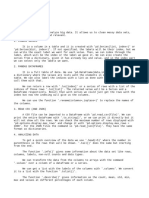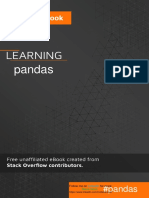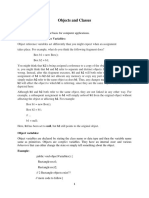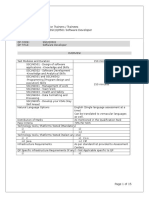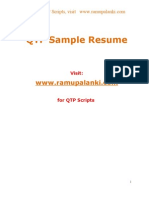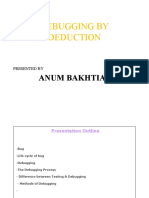0% found this document useful (0 votes)
6 views6 pagesPandas
The document is a comprehensive tutorial on the Pandas library for Python, covering installation, data structures, and various operations such as data manipulation, handling missing data, and visualization. It includes sections on advanced topics like pivot tables and multi-indexing. The tutorial emphasizes the importance of Pandas in data science and analysis workflows.
Uploaded by
Tom CruiseCopyright
© © All Rights Reserved
We take content rights seriously. If you suspect this is your content, claim it here.
Available Formats
Download as PDF, TXT or read online on Scribd
0% found this document useful (0 votes)
6 views6 pagesPandas
The document is a comprehensive tutorial on the Pandas library for Python, covering installation, data structures, and various operations such as data manipulation, handling missing data, and visualization. It includes sections on advanced topics like pivot tables and multi-indexing. The tutorial emphasizes the importance of Pandas in data science and analysis workflows.
Uploaded by
Tom CruiseCopyright
© © All Rights Reserved
We take content rights seriously. If you suspect this is your content, claim it here.
Available Formats
Download as PDF, TXT or read online on Scribd
/ 6
































